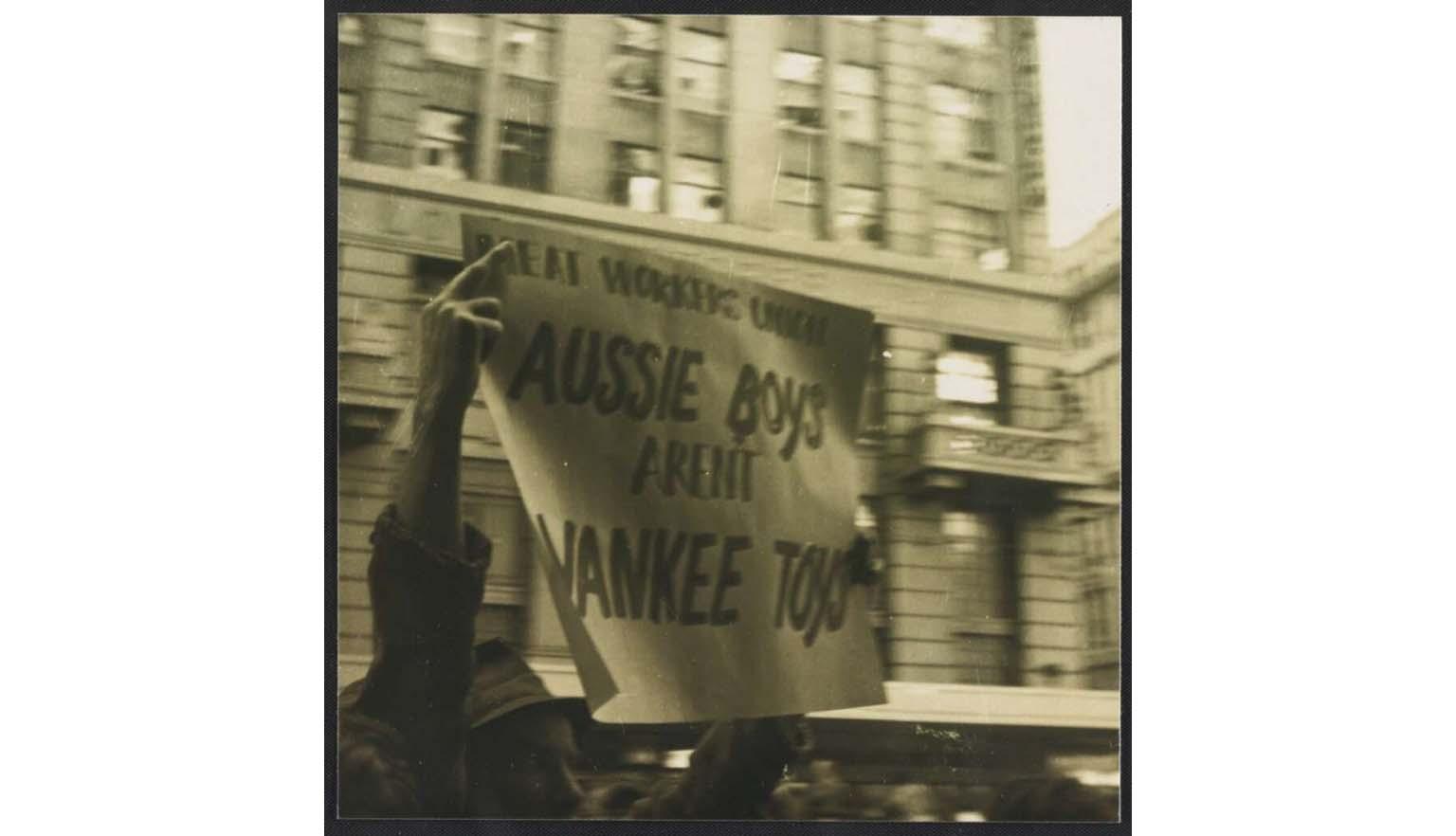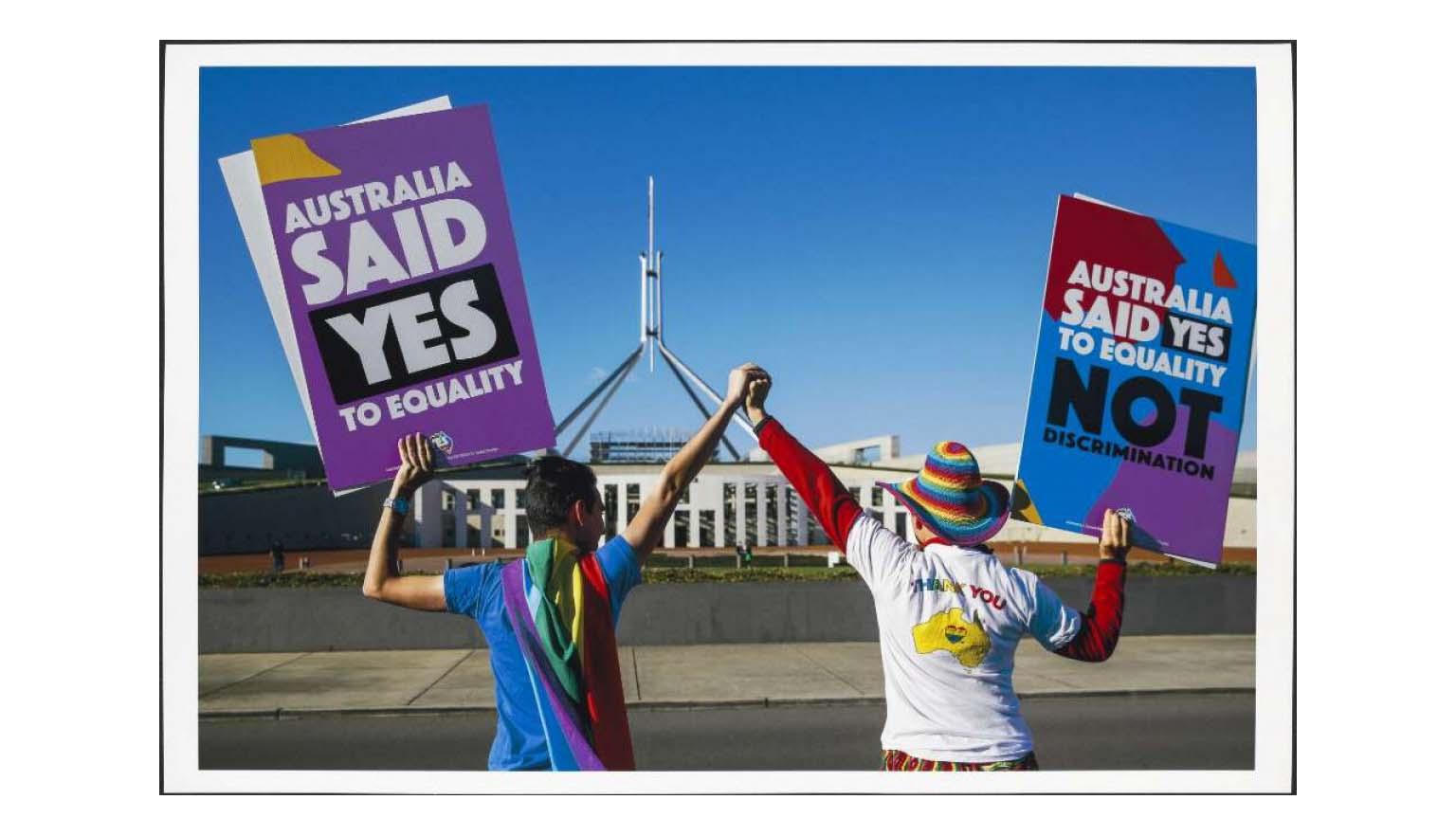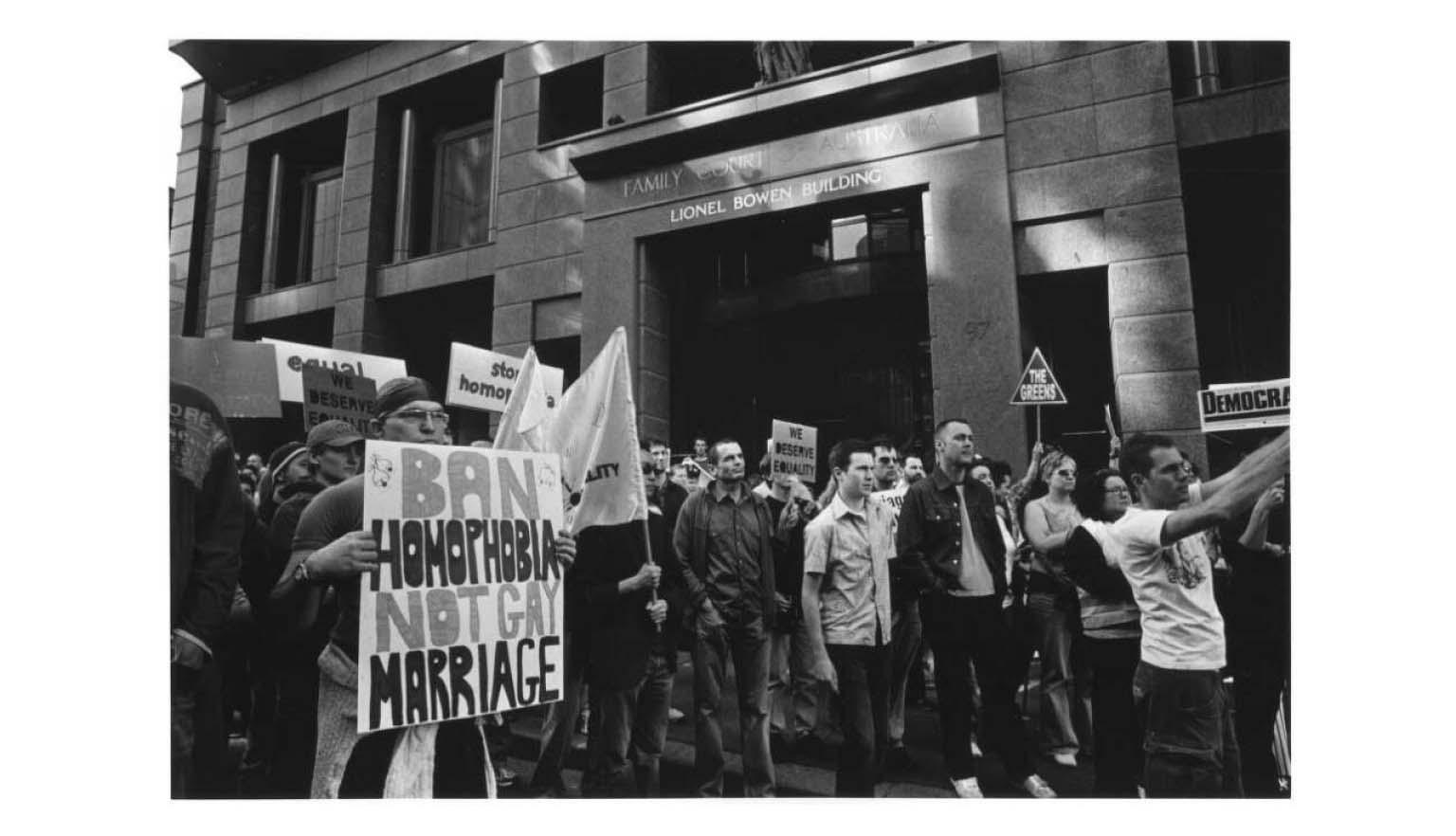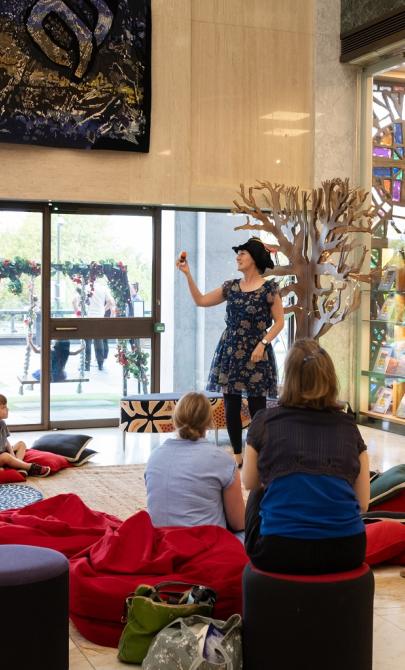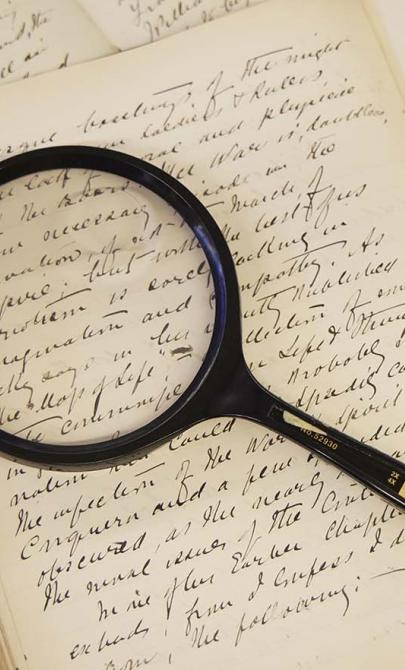Dissent in society
The rise of protest movements
The 1970s marked a significant increase in rights-based movements, petitions and public demonstrations. As public awareness grew, so did the willingness of people to speak out on social and political issues.
Vietnam War
While earlier debates about Australia’s involvement in war occurred in the 20th century, none matched the scale of protest seen during the Vietnam War.
The conflict began as a civil war between communist North Vietnam and democratic South Vietnam, but it became part of the broader Cold War between the United States and the Soviet Union.
Australia joined the conflict in 1962, with combat troops added later. In 1965, the government introduced conscription, which required young men to serve in the military. Early protests were small, but public opposition grew as more information about the war became available.
Television brought uncensored footage of the war into Australian homes. Reports of civilian casualties, the use of chemical weapons like Agent Orange, and the My Lai massacre in 1969 shifted public opinion dramatically.
Marriage equality
A more recent example of protest in Australia is the campaign for LGBTIQA+ rights, particularly the push for marriage equality.
In 2004, the Australian Parliament amended the Marriage Act 1961 to define marriage as “the union of a man and a woman.” This change excluded same-sex couples and sparked a national campaign for equality.
Between 2015 and 2017, public debate intensified. While some countries passed laws supporting marriage equality, Australia held the Australian Marriage Law Postal Survey in 2017 to gauge public opinion.
Groups such as Coalition for Marriage supported a ‘No’ vote, while Marriage Equality Australia campaigned for ‘Yes’. The 56-day campaign saw a wide range of public responses, including:
- Boycotts of businesses
- Homophobic advertising
- Satirical songs
- A marriage equality anthem performed at the NRL Grand Final
While some viewed the survey as a unifying moment, others criticised it for causing harm to the LGBTIQA+ community.
Learning activities
Activity 1: What is dissent?
Dissent is an important part of democratic societies—it allows people to express disagreement and influence change.
- Begin with a class discussion:
- How would you define dissent?
- What are some real-life or historical examples of dissent?
- Can dissent be peaceful or disruptive? When might it be necessary?
Activity 2: The role of the High Court
The Australian Constitution gives the High Court the power to interpret the law and decide if Acts of Parliament are valid. It plays a key role in checking the power of Parliament.
- Discuss how courts, especially the High Court, act as a check on parliamentary power.
- Ask students to research or brainstorm examples of controversial issues in Australia that have:
- been challenged in the High Court
- caused national debate (e.g. same-sex marriage, citizenship laws, voting rights, Indigenous recognition)
- For each issue, students can briefly record:
- What was the issue?
- What was the legal or constitutional question?
- What was the result of the High Court’s decision?
Activity 3: How are laws made?
Understanding how laws are made—and how they can be challenged—is key to understanding how Australia’s government works.
- Have students create a flowchart showing how legislation is passed in the Federal Parliament.
- Include key steps such as: proposal, readings in both houses, debates, amendments and Royal Assent.
- Add detail about:
- what happens if there’s disagreement in Parliament
- when and how the High Court can become involved if a law is challenged
- Students can use symbols, colours or digital tools to make the process clear and engaging.
